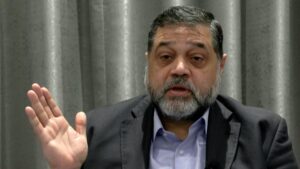Pentagon doc reveals US lied about Afghan civilians killed in 2021 drone strike
U.S. military officials knew that an August 2021 drone strike in Kabul likely killed Afghan civilians including children but lied about it, a report published Friday revealed.
New York Times investigative reporter Azmat Khan analyzed a 66-page redacted U.S. Central Command report on the August 29, 2021 drone strike that killed 10 members of the Ahmadi family, including seven children, outside their home in the Afghan capital. The strike took place during the chaotic final days of the U.S. ground war in Afghanistan, just three days after a bombing that killed at least 182 people, including 13 American troops, at Kabul’s international airport.
Zamarai Ahmadi, a 43-year-old aid worker for California-based nonprofit Nutrition and Education International, was carrying water containers that were mistaken for explosives when his Toyota Corolla was bombed by a Lockheed-Martin Hellfire missile fired from a General Atomics MQ-9 Reaper drone.
As reports of civilian casualties began circulating hours after the strike, U.S. military officials claimed there were “no indications” that noncombatants were harmed in the attack, while stating that they would investigate whether a secondary explosion may have killed or wounded people nearby.
U.S. military officials knew that an August 2021 drone strike in Kabul likely killed Afghan civilians including children but lied about it, a report published Friday revealed.
New York Times investigative reporter Azmat Khan analyzed a 66-page redacted U.S. Central Command report on the August 29, 2021 drone strike that killed 10 members of the Ahmadi family, including seven children, outside their home in the Afghan capital. The strike took place during the chaotic final days of the U.S. ground war in Afghanistan, just three days after a bombing that killed at least 182 people, including 13 American troops, at Kabul’s international airport.
“When confirmation bias was so deadly in this case, you have to ask how many other people targeted by the military over the years were also unjustly killed.”
Zamarai Ahmadi, a 43-year-old aid worker for California-based nonprofit Nutrition and Education International, was carrying water containers that were mistaken for explosives when his Toyota Corolla was bombed by a Lockheed-Martin Hellfire missile fired from a General Atomics MQ-9 Reaper drone.
As reports of civilian casualties began circulating hours after the strike, U.S. military officials claimed there were “no indications” that noncombatants were harmed in the attack, while stating that they would investigate whether a secondary explosion may have killed or wounded people nearby.
However, as the Times details:
Portions of a U.S. Central Command investigation obtained by The New York Times show that military analysts reported within minutes of the strike that civilians may have been killed, and within three hours had assessed that at least three children were killed.
The documents also provide detailed examples of how assumptions and biases led to the deadly blunder.
Military analysts wrongly concluded, for example, that a package loaded into the car contained explosives because of its “careful handling and size,” and that the driver’s “erratic route” was evidence that he was trying to evade surveillance.
Furthermore:
The investigation refers to an additional surveillance drone not under military control that was also tracking the vehicle but does not specify what it observed. The Times confirmed that the drone was operated by the CIA and observed children, possibly in the car, moments before impact, as CNN had reported.
U.S. military officials initially claimed the “righteous strike” had prevented an imminent new attack on the airport. However they later admitted that the botched bombing was a “horrible mistake.”
The military’s investigation was completed less than two weeks after the strike. However, it was never released to the public. The Pentagon said it would not punish anyone for killing the Ahmadi family.
Originally published at Commondreams.org.













